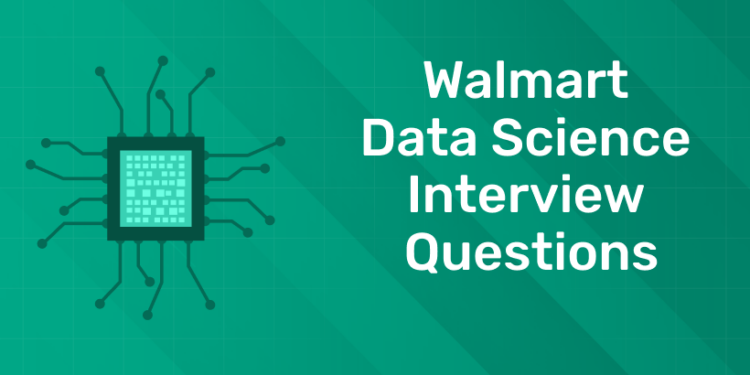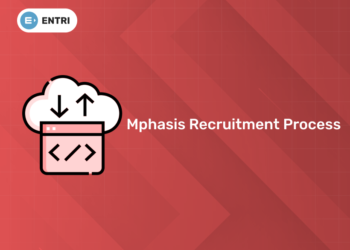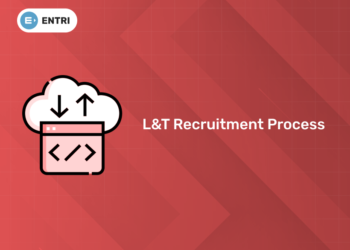Table of Contents
Data science has become an integral part of modern retail. As one of the world’s largest retailers, Walmart employs data science at an immense scale, dealing with massive datasets that span inventory optimization, demand forecasting, customer behavior analysis, and supply chain management. Walmart interviews test not only your technical expertise in statistics, machine learning, and programming but also your ability to solve business problems through data-driven insights. This blog is designed to give you an overview of the types of Walmart data science interview questions you can expect, tips on how to prepare effectively, and key skills Walmart looks for in their data science candidates.
Enhance your data science skills with us! Join our free demo today!
Walmart Data Science Interview Questions
Here’s a detailed list of Walmart data science interview questions and sample answers to help you prepare effectively:
SQL and Data Manipulation Questions
Write a SQL query to find the top 5 products with the highest sales in the last month.
SELECT product_id, SUM(sales) AS total_sales
FROM sales_data
WHERE sale_date >= DATEADD(month, -1, GETDATE())
GROUP BY product_id
ORDER BY total_sales DESC
LIMIT 5;
Explanation: This query sums sales for each product in the last month, sorts them by sales in descending order, and retrieves the top 5.
How do you handle NULL values in a dataset using SQL?
Replace NULLs with a default value using COALESCE or ISNULL.
Example: SELECT COALESCE(column_name, ‘Default Value’) FROM table_name;
Filter out NULLs using WHERE column_name IS NOT NULL.
Statistics and Probability Questions
What is the difference between Type I and Type II errors?
Type I Error: Rejecting the null hypothesis when it is true (false positive). Example: A test wrongly flags a product as defective.
Type II Error: Failing to reject the null hypothesis when it is false (false negative). Example: A test fails to identify a defective product.
Follow-up Question: Explain the trade-off between Type I and II errors when setting significance levels.
How would you test whether a pricing change increases sales?
Perform an A/B Test:
Split the population into control (no pricing change) and test groups (with pricing change).
Collect sales data over time.
Use a t-test to compare average sales between the groups.
Reject the null hypothesis if p-value < 0.05, indicating the pricing change has a significant impact.
Machine Learning Questions
Explain the difference between supervised and unsupervised learning.
Supervised Learning: The model is trained on labeled data (e.g., predicting customer churn).
Unsupervised Learning: The model identifies patterns in unlabeled data (e.g., customer segmentation using clustering).
Example Applications in Walmart:
Supervised: Predicting sales for a new store location.
Unsupervised: Grouping customers based on purchasing habits.
How would you handle an imbalanced dataset?
1. Resampling:
Oversampling the minority class (e.g., SMOTE).
Undersampling the majority class.
2. Using appropriate metrics:
Use precision, recall, or F1-score instead of accuracy.
3. Applying algorithms:
Use algorithms like Random Forest, XGBoost with built-in class weighting.
What’s the difference between bagging and boosting?
Bagging (Bootstrap Aggregating): Combines multiple weak learners trained on random subsets of data to reduce variance (e.g., Random Forest).
Boosting: Sequentially trains weak learners, giving more weight to misclassified samples, to reduce bias (e.g., Gradient Boosting, XGBoost).
Business Problem Solving
Walmart is experiencing a sudden drop in sales in one region. How would you approach this problem?
1. Collect Data: Gather data on sales, inventory, customer demographics, and external factors (e.g., weather, competitors).
2. Analyze Trends: Look for patterns (e.g., sales by product category, time).
3. Investigate Root Causes:
- Check for stockouts or supply chain issues.
- Review pricing or promotional changes.
- Analyze customer feedback.
4. Take Action: Propose solutions such as promotions, better stock management, or addressing competitor pricing.
Data Analysis and Visualization Questions
How would you visualize year-over-year sales trends for different product categories?
Use a line chart with:
X-axis: Time (month/year).
Y-axis: Sales.
Different lines for each product category.
Tools: Matplotlib, Seaborn, or Tableau.
Follow-up: Add annotations for key events like holidays or promotions.
Walmart wants to analyze customer behavior for online purchases. What metrics would you look at?
1. Key Metrics:
Conversion rate, cart abandonment rate, average order value (AOV), and repeat purchase rate.
2. Data Analysis:
Identify which categories have the highest/lowest conversions.
Analyze time spent on-site and browsing patterns.
Case Study Questions
Walmart wants to optimize its supply chain to reduce costs. How would you approach this?
1. Data Collection: Gather data on transportation costs, delivery times, warehouse locations, and product demand.
2. Modelling:
Use predictive models to forecast demand.
Apply optimization algorithms to reduce transportation routes and delivery times.
3. Analysis:
Identify inefficiencies in the current process.
Simulate scenarios to evaluate the impact of proposed changes.
4. Implementation: Collaborate with logistics teams to implement solutions.
Behavioral Questions
Tell me about a time you worked on a cross-functional team to solve a data problem.
Situation: I worked on a project to optimize pricing for a retail client.
Task: Collaborate with marketing, product, and data engineering teams to implement a dynamic pricing model.
Action: Analyzed sales data, tested algorithms, and presented insights to stakeholders.
Result: Increased revenue by 12% in six months.
By practicing these questions and tailoring answers to your experience, you’ll be well-prepared for Walmart’s data science interview process!
Interview Tips
1: Which of the following algorithms is most suitable for classification tasks?
Here are some essential interview tips to help you excel in a Walmart data science interview:
- Understand Walmart’s Business and Mission
- Review Key Data Science Concepts
- Master SQL and Data Manipulation
- Practice Problem-Solving with Real-World Scenarios
- Highlight Communication Skills
- Focus on Business Impact
- Prepare for Behavioral Questions
- Brush Up on Data Visualization
- Showcase Your Collaborative Skills
- Mock Interviews and Practice
- Be confident and stay calm. Explain your thought process logically.
- End the interview by asking insightful questions to show your interest, such as:
- How does Walmart integrate data science into its decision-making processes?
- What are some of the most significant data challenges Walmart is currently tackling?
- What tools and technologies does the data science team primarily use?
Conclusion
Preparing for a Walmart data science interview requires a combination of technical expertise, analytical thinking, and business acumen. Walmart values candidates who can not only build models and analyze data but also translate those insights into actionable strategies that drive real-world impact in retail.
By demonstrating your technical skills, critical thinking, and alignment with Walmart’s mission, you’ll position yourself as a strong candidate ready to contribute to one of the most data-intensive retail environments in the world. Best of luck in your interview!
Enhance your data science skills with us! Join our free demo today!










